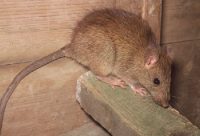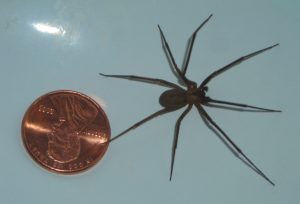While some wild animals hibernate or grow extra coats of fur to keep warm during the winter, the rodent species does neither, and would rather invade our homes and yards and generally wreak havoc in our lives, while soaking up our heat. As a matter of fact, according to the National Pest Management Association (NPMA), it is estimated that 21 million homes are invaded and infested by rodents every winter.
Here at Clark Exterminating, we thought we would share a list of the rodents native to Arkansas, the problems they can cause, and how to identify possible infestations. The first part of our rodent series discusses the most common household rodents/pests: rats.
Home Damage
The most comment species of rat in Arkansas are the Roof Rat and the Wood Rat. These particular species of rodent can cause thousands of dollars in home repairs if an infestation is not caught in time. Rats will build their nests beneath the foundations of buildings and inside walls, ceilings, and cabinets and will chew through items such as plastic and wood, leaving holes in walls and floorboards.
Health Hazards
Not only can rats be destructive to your home, but they can also be destructive to your health. Maybe you’ve heard about a little epidemic known as the Bubonic Plague that swept through Asia, Europe, and Africa in the 14th century? The resulting “Black Death” killed an estimated 50 million people (about 25% to 60% of the European population) and was believed to be caused by the overpopulation of both people and rats living in close quarters in the major cities of that time.
Rats can transmit disease through their bites, scratches, contact with their feces or urine, and the contamination of food in the home. The diseases associated with rats are:
– Hantavirus – a disease that can lead to kidney damage or failure
– Listeria- a type of bacterium that infects humans and other warm-blooded animals through contaminated food
– Rat-Bite Fever- causes inflammation of the skin and fever or vomiting
– Salmonella- infection with salmonella bacteria, commonly caused by contaminated food or water
– Allergies and Asthma- Contact with rat urine can cause the development of asthma and allergies in young children and the elderly
Signs of Infestation
Because rats are a naturally secretive species, it is rare that you would ever see one, which makes spotting an infestation that much harder. Rats are also nocturnal animals so if you should happen to see just one during the day, that is usually a serious sign of an infestation somewhere in your home.
Here are some other signs of a rat infestation:
– rat droppings
– dirt and grease marks along floorboards and walls
– teeth marks on chewed objects
How to Prevent an Infestation:
According to the EPA, these are best practices to prevent a rat infestation in your home:
– Seal holes inside and outside the home to keep rodents out. This may be as simple as plugging small holes with steel wool or patching holes in inside or outside walls.
– Remove potential rodent nesting sites from your property, including leaf piles and deep mulch.
– Clean up food and water sources in and near your house.
– Keep kitchen garbage in containers with tight-fitting lids.
– Turn compost piles to cover newly added food scraps.
If you feel you may have an infestation, the best practice is to call a pest control company so they can come out and inspect your home to identify the species of rodent and advise on the best courses of action.
Be sure to keep on the lookout for the next part of our series when we discuss other Arkansas rodents such as mice, voles, gophers, muskrats, and squirrels. If you think you may have a rat infestation and need help to either control or prevent one, contact us online or by phone at any of our locations.
Little Rock: 501-228-0322
North Little Rock: 501-758-0322
Conway: 501-329-0396
Benton: 501-776-1388
Bryant: 501-847-1388
Jacksonville/Cabot: 501-843-1322
Hot Springs: 501-623-2335




